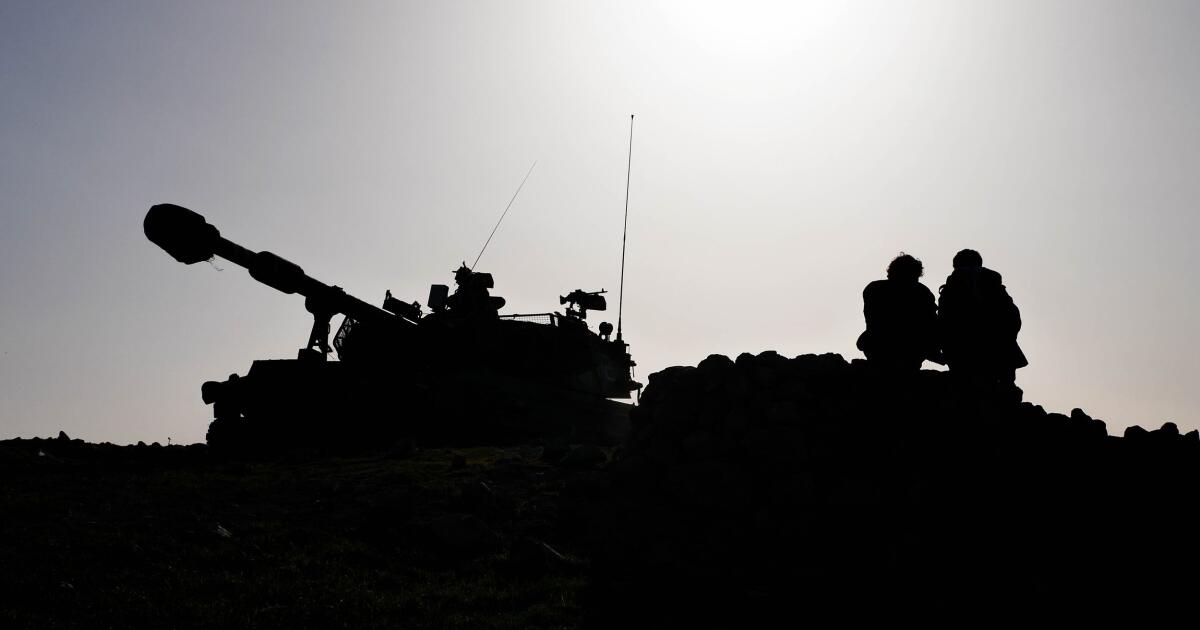Even the making of “No Other Land” was an act of survival. Its tense scenes erupt with the fractious energy of a war film and come with the same potential for sudden violence, as an activist Palestinian filmmaker and his colleagues capture the ongoing campaign of displacement carried out by the Israeli military against his West Bank community of Masafer Yatta.
Basel Adra had been documenting the actions for years; he grew up watching his neighbors filming the army’s incursions — and joining members of his activist family in protests. “I didn’t study making films or even how to deal with the camera. I only learned how to use the camera in the field for documentation,” he notes. In 2019, he met Israeli journalist Yuval Abraham, who ventured there on assignment. Along with Hamdan Ballal, a Palestinian photographer who worked alongside Adra, and Rachel Szor, an Israeli cinematographer, they formed a collective in 2019 to make the documentary. “We took this decision,” Adra says, “and we started working step by step together.”
An already bleak situation became worse in 2022, when the Israeli Supreme Court ruled against the people of Masafer Yatta in their long-running fight against a 1980 decree to turn their homeland into a training zone for the Israeli Defense Forces.
As depicted in the film, which uses extensive archival and more recent vérité footage to chart decades of on-again, off-again destruction, bulldozers raze a school and homes, wells are filled with cement and power generators are hauled away. Protesting villagers are roughed up, intimidated and even shot, as others flee into caves.
There was plenty of risk to navigate. “We try to be safe as much as we can,” says Adra, who often moved with a group, sometimes including Israeli and other non-Palestinian activists, but also operated alone when he felt he had to. “I paid prices for some of it,” he says, including physical attacks and detainment in a military base. It helped to shoot with consumer-grade gear. “It was a small camera you can take in one hand,” says Adra during a recent joint Zoom conversation with Abraham in Masafer Yatta. “It’s easy to use, and to run with it.”
As journalist Abraham notes, “Basel is very fast. He runs really quickly. He’s always running and it’s impossible to catch up with him. Always I’m panting behind him, and he’s already over the mountain.”
Beyond physical harm, the collective also had to contend with the possibility that the army might seize its gear — Adra lost five cameras and a laptop — and unsaved files of edits could be lost to power outages. “In most of the villages, you’re not allowed to build anything,” Abraham says, “so there are barely spaces where you can work.” Much of the film was edited in Adra’s basement or that of his great-grandmother.
“The film only portrays a glimpse,” Abraham says. “It’s probably less than 1% of the material we had. The demolitions that we filmed, and the violence that we captured, and the conversations that me and Basel had, and the archive material — there was a lot to choose from.” The filmmakers also had to squeeze footage that was repetitive, spread across many years, into 90 minutes that would convey a sense of movement as it documented the changes in the community. They were able to make use of a bounty of home movies scattered across the community, much in analog formats, to cover two decades of encounters with the Israeli forces. One random discovery opens the film: a 7-year-old Adra in a protest.
And beyond that, the project also tells the story of a Palestinian-Israeli alliance and the friendship that develops between Adra and Abraham, who are both on camera throughout the film. “We decided to make this film that will speak about the community,” Abraham says, “and look at the possibility of co-resistance in a reflexive way, and look at us, and try to examine that as well. We were hoping that through the medium of film, we will be able to reach people in a different way than we were able before.”
Last year’s Oct. 7 Hamas attack on Israel, and the Israel-Gaza war, not only precedes one of the most horrific moments in the film — as an armed Israeli settler shoots Adra’s cousin — but complicated the film’s reception in some quarters. Although it received the prize for best documentary after its premiere at this year’s Berlin Film Festival, there was a controversial response from the German culture minister and death threats for Abraham. “No Other Land” has yet to find U.S. distribution, although it received an Oscar-qualifying theatrical run at New York’s Film at Lincoln Center and is screening worldwide.
“We hope there will be somebody brave enough to take it,” Abraham said. “It’s very insane … ”

